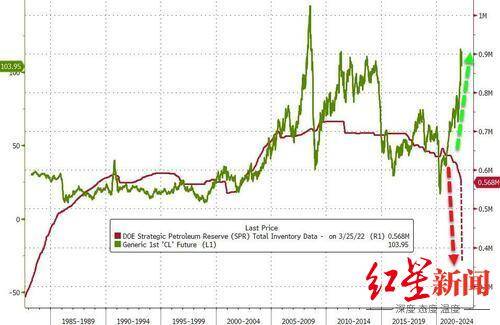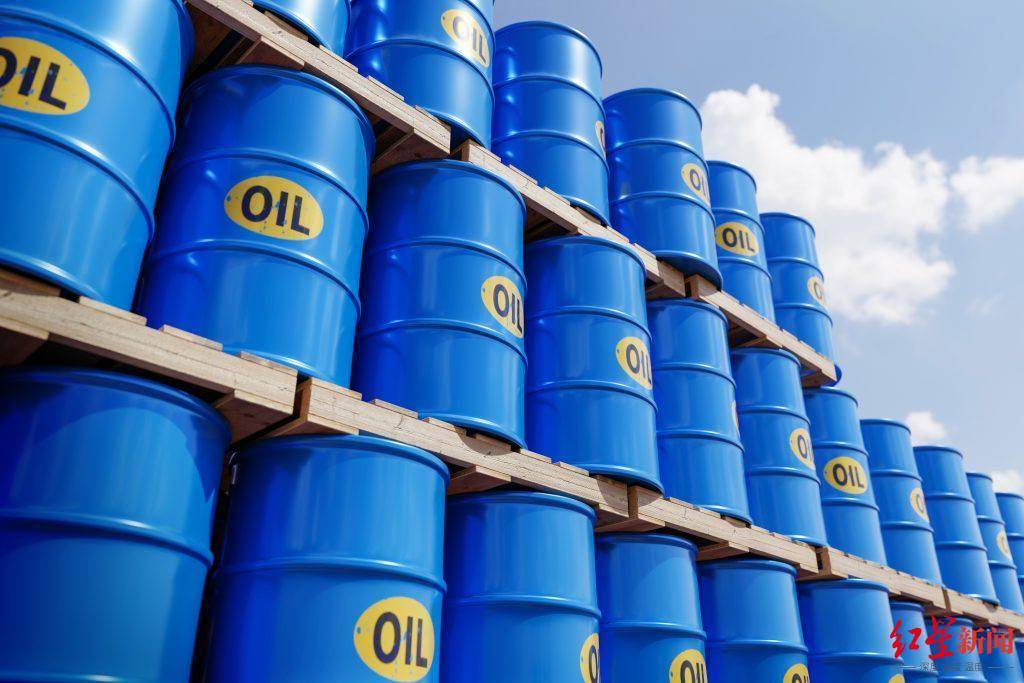On March 31, local time, US President Biden announced that in response to the surge in oil prices caused by the situation in Russia and Ukraine, 1 million barrels of strategic oil reserves will be released per day in the next six months. “This is unprecedented in scale, and the world has never released oil reserves at a rate of 1 million barrels per day for so long,” the White House said in a statement.
According to foreign media reports, this means that the United States will release a total of 180 million barrels of oil reserves, which is the largest release of reserves since the United States established the Strategic Petroleum Reserve (SPR) system in 1974. At the same time, this is also the third time since November 2021 that the United States has released strategic petroleum reserves. In November 2021 and early March this year, the U.S. government released 50 million barrels and 30 million barrels of strategic petroleum reserves respectively.
So, what will be the impact of this “unprecedented” release of oil reserves in the United States? Can it successfully curb soaring oil prices?
According to foreign media reports, the main purpose of the large-scale release of oil reserves in the United States is to curb soaring oil prices in the United States. Behind it is the Democratic Party’s “vote” in this year’s midterm elections. In the mere minutes after Biden officially announced the decision, oil prices quickly fell by more than $5 a barrel. However, professional analysts are not optimistic about the impact of the U.S. government’s move on oil prices, believing that the short-term benefits that can be brought to both U.S. consumers and the global market are “minimal”.
▲ Since the outbreak of the Russia-Ukraine conflict, domestic oil prices in the United States have soared
“While this can dampen oil prices in the short term, it will be difficult to make up for the loss of Russian oil exports,” said Halley, senior market analyst at Canadian foreign exchange trader OANDA. The amount of oil unleashed by the Biden administration could cut U.S. oil prices by 5 to 10 cents a gallon in the short-term, but the long-term impact will be small, said Andy Ripper, president of Houston-based energy consultancy Lipow Oil Associates.
Victor Shen, vice president of S&P Global Consulting, also said the effect of the move was likely to be “trivial” and that the focus remained on Russian exports. He pointed out that in recent months, the increase in OPEC+ production and the release of the U.S. strategic oil reserve can make up for the gap in Russia’s crude oil supply. But if Russian crude exports remain at a 3 million barrel per day reduction from April to December, the global market will be left with a supply gap of 825 million barrels, well above the current U.S. reserve of nearly 570 million barrels.
Analysts such as Goldman Sachs Energy Research Director Kuvalin said in a research report that the release of the SPR will help the crude oil market reach a balance between supply and demand this year. In the long term, this will not solve the structural supply shortages that have developed over the years. Booker, general manager of energy consulting firm ClearView Energy, also pointed out in a research report that although the move can bring global crude oil to a balance between supply and demand, it will not help the rebuilding of healthy global crude oil inventories.
Halley said that in the long run, the U.S. strategic oil reserve will drop significantly, but as the summer when the U.S. driving demand is at its peak approaches, oil demand will rise further, and there will be a potential upside for oil prices. Gardner, a commodity economist at Capital Economics, believes that the release of the strategic oil reserve in the United States can ease high oil prices in the short term, but only by increasing global oil production can the surge in oil prices be truly curbed.
McNally, George Bush’s energy adviser, said the Russian influence was a big problem that the SPR couldn’t address. He explained that gasoline prices are mainly affected by crude oil prices. As long as the risks to Russia remain and intensify, crude oil prices will move higher.
▲ An oil storage site in Bayona, New Jersey, USA
US “stock” bottoms out
Imports of Russian oil are accelerating
Not only that, but the U.S. Strategic Petroleum Reserve has been somewhat depleted after two previous releases, according to calculations by RBC Capital Markets.
According to the International Energy Agency (IEA), the US SPR is currently only 568.3 million barrels of crude oil, the lowest level since May 2002. If you subtract the 180 million barrels released in this plan, only about 300 million barrels of U.S. SPR remain, the lowest level since 1984. That means the U.S. SPR no longer has any effective buffer space, the report said.

▲The US SPR will hit the lowest level since 1984
An analysis by RBC Capital Markets pointed out that based on the 90-day net import reserves that IEA member countries must hold, the U.S. SPR must hold 315 million barrels. “The U.S. government runs out of SPR bullets,” analyst Michael Tran said in a note.
While the world expects OPEC+ to increase production, the group’s additional spare capacity of only 2 million to 2.5 million barrels per day cannot quickly fill the “gap”. What’s more, OPEC+ has stated after the online meeting on March 31 that it will insist on gradually increasing production. OPEC+ approved plans to increase production by 432,000 barrels per day starting in May, according to the statement.
According to foreign media analysis, OPEC’s refusal to increase production may weaken the impact of the release of the United States’ strategic oil reserves. The White House said the U.S. decision to release oil from the Strategic Petroleum Reserve was made in consultation with allies and partners. U.S. government officials said other countries are expected to “catch up” soon and release oil reserves together.
At the same time, in the face of the “stock” that has bottomed out, while escalating sanctions against Russia and frequently warning India not to buy too much Russian energy, the United States began to secretly accelerate the purchase of Russian oil. According to Russian media reports on March 30, the United States did suspend imports of Russian oil from February 19 to February 25. However, the U.S. Energy Information Administration (EIA) reported that back in early March, U.S. oil imports from Russia had reached their highest level since 2022 at 148,000 barrels per day. Not only that, from March 19 to 25, the amount of oil imported by the United States from Russia increased by 43% compared with the previous week, with an average of as much as 100,000 barrels of oil imported from Russia per day.
Red Star News reporter Xu Huan
Edited by Pan LiReturn to Sohu, see more
